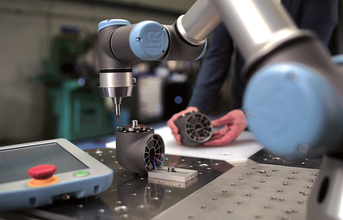
Today, most plant floors have become ‘smart', doing more than their basic sensing, measurement and actuating roles. The concepts of accuracy and repeatability have gained momentum because companies are realising the need to sustain manufacturing efforts without compromising on quality and efficiency. For industries that deal with processing, assembly, inspection or material handling, in some cases accomplishing more than one of these operations in the same system, repeatability is more important than accuracy. Many companies are now incorporating new robotic technologies like collaborative robots to speed up production.
BMW automated the laborious task of applying door sealant on cars before the door casings are attached and moved workers to less strenuous and more interesting tasks by employing collaborative robotics in to their daily processes. Employees were able to work in close proximity to the robot without any safety guarding. This eased the physical burden for older workers as well as ergonomics for difficult manufacturing processes.
Companies in India need to understand that adopting these technologies
will also guarantee that more businesses will shift their bases to a country that
has already incorporated such technologies, also meaning that there will
be a loss of business for countries that don't. Barclays Equity Research analysts
estimates that the collaborative robots market will grow to $3.1bn by 2020 and
$12bn by 2025 which means more companies are accepting the need to equip
themselves with better technology. Cobot is an inevitable catalyst in the manufacturing ecosystem of tomorrow.
END
Pradeep David, the author, is General Manager, India at Universal Robots



































